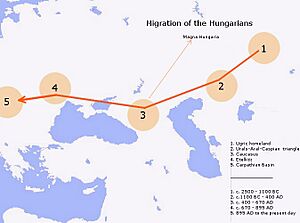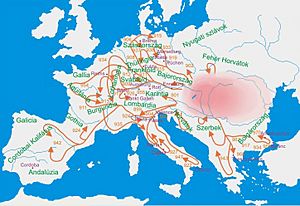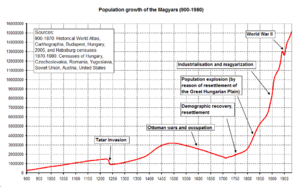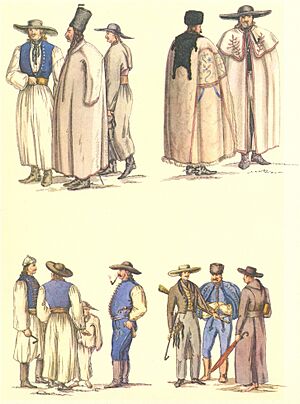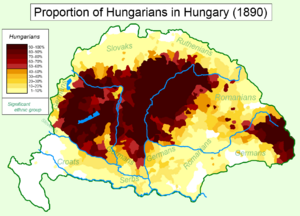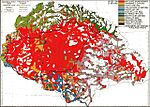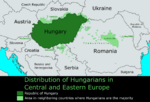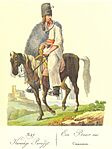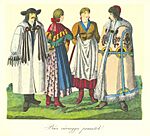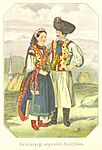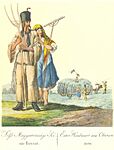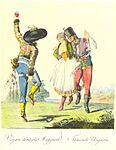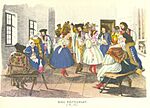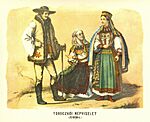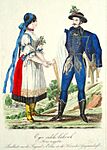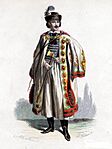Hungarians facts for kids
| Magyarok | |||||||||||||||||||||||||||||||||||||||||||||||||||||||
|---|---|---|---|---|---|---|---|---|---|---|---|---|---|---|---|---|---|---|---|---|---|---|---|---|---|---|---|---|---|---|---|---|---|---|---|---|---|---|---|---|---|---|---|---|---|---|---|---|---|---|---|---|---|---|---|
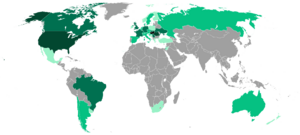
Ethnic distribution of Hungarians worldwide
|
|||||||||||||||||||||||||||||||||||||||||||||||||||||||
| Total population | |||||||||||||||||||||||||||||||||||||||||||||||||||||||
| c. 14.5 million | |||||||||||||||||||||||||||||||||||||||||||||||||||||||
| Regions with significant populations | |||||||||||||||||||||||||||||||||||||||||||||||||||||||
| Other countries | |||||||||||||||||||||||||||||||||||||||||||||||||||||||
|
|||||||||||||||||||||||||||||||||||||||||||||||||||||||
|
|||||||||||||||||||||||||||||||||||||||||||||||||||||||
|
|||||||||||||||||||||||||||||||||||||||||||||||||||||||
|
|||||||||||||||||||||||||||||||||||||||||||||||||||||||
| Languages | |||||||||||||||||||||||||||||||||||||||||||||||||||||||
| Hungarian | |||||||||||||||||||||||||||||||||||||||||||||||||||||||
| Religion | |||||||||||||||||||||||||||||||||||||||||||||||||||||||
| Majority: Christianity (mostly Roman Catholicism, also Protestantism (chiefly Calvinism, Unitarianism, and Lutheranism), Eastern Orthodoxy and Greek Catholicism) Minority: Judaism; irreligious |
|||||||||||||||||||||||||||||||||||||||||||||||||||||||
| Person | Magyar |
|---|---|
| People | Magyarok |
| Language | Magyar nyelv, Magyar jelnyelv |
| Country | Magyarország |
Hungarians, also known as Magyars, are a group of people mainly from Central Europe. They are known for sharing a common culture, history, and language. Most Hungarians live in Hungary, but many also live in other countries.
The Hungarian language is special because it belongs to the Uralic language family. This family also includes languages like Finnish and Estonian. There are about 14.5 million Hungarians and their descendants around the world. About 9.6 million of them live in Hungary today.
Many Hungarians also live in countries that were once part of the Kingdom of Hungary before 1920. These countries include Slovakia, Ukraine, Romania, Serbia, Croatia, Slovenia, and Austria. Large groups of people with Hungarian roots also live in the United States, Canada, Germany, France, the United Kingdom, and Australia. These groups form what is called the Hungarian diaspora, which means Hungarians living outside their home country.
Hungarians can be divided into smaller groups based on their local language and culture. Some of these groups are the Székelys in Transylvania, the Csángós in Moldavia, the Palóc, and the Matyó.
Contents
What's in a Name?
The name "Hungarian" likely comes from an old Turkic word, "On-Ogur," which means "Ten Arrows" or "Ten Tribes." This name might have been used when Hungarians lived east of the Ural Mountains.
Before Hungarians settled in the Carpathian Basin, old writings called them "Ungri" or "Ungari." This name probably came from their connection to the Onogur tribal alliance. Over time, different countries used their own versions of the name, like "Węgrzy" in Polish or "Ungar" in German.
In their own language, Hungarians call themselves "Magyar." This name probably came from "Megyer," which was the name of the most important Hungarian tribe. This tribal name then became the name for all Hungarian people.
A Look at History
Where Did Hungarians Come From?
Historians have long discussed where Hungarians originally came from. Their language, Hungarian, is part of the Ugric family. This suggests their ancestors lived east of the Ural Mountains in Siberia. Over time, these ancient Ugric people mixed with other groups, including local European populations.
The people who conquered the Carpathian Basin and founded Hungary were a mix of different groups. They included the Ugric/Magyar leaders, along with people who spoke Turkic and Slavic languages. This mix of people created the modern Hungarian culture.
Historians now believe that "Hungarians" as a distinct group didn't fully form until the 9th century. They became a unique people by including different groups as they moved and settled.
Early Journeys
Around 4,000 years ago, people who spoke early Uralic languages began to spread out from the Ural Mountains. The ancestors of the Magyars were among them, living further south. They interacted with other cultures in Asia.
In the 4th and 5th centuries AD, Hungarians were a mixed group of people. They moved west of the Ural Mountains, settling near the Volga River. By the early 8th century, some Hungarians moved to the Don River. Here, they lived near the Khazars and learned about farming and raising animals. Hungarians were organized into a group of seven tribes.
Moving West
Around 830 AD, some Khazar tribes joined the Hungarians. They moved to a new area between the Carpathian Mountains and the Dnieper River. From 862 AD, Hungarians, along with their allies, began raiding into the Carpathian Basin and other parts of Europe. These raids were mostly against the Eastern Frankish Empire and Great Moravia.
Settling in the Carpathian Basin
The Hungarians arrived in the Carpathian Basin in a planned way, between 862 and 895 AD. This area was already home to some people, including the Avars and Slavs. The Hungarian leaders, especially Álmos and his son Árpád, created a strong alliance of tribes. They became the founders of the Árpád dynasty, which ruled Hungary for centuries.
Many medieval Hungarian stories say that the Árpád dynasty was directly related to Attila, the famous Hun leader. This idea helped to strengthen their rule.
The Hungarians settled in the Carpathian Basin, and archaeological findings show that women, children, and elderly people were part of this move. This means it was a large migration, not just a military invasion. The local people living there were either absorbed into the Hungarian society or became part of their system.
In 895/896 AD, under Árpád's leadership, some Hungarians crossed the Carpathians and entered the basin. The Megyer tribe was the main group that conquered the central part of the area.
After the Conquest
After settling, Hungarians continued their military campaigns across Europe. In 907 AD, they defeated a Bavarian army. They raided parts of Germany, France, and Italy. Their expansion was stopped at the Battle of Lechfeld in 955 AD. However, raids in the Balkan Peninsula continued for a while.
The Pope approved the Hungarian settlement when their leaders became Christian. Stephen I was crowned King of Hungary in 1001 AD. After becoming a Christian nation, Hungary became a strong defense against other invasions from the east.
At this time, there were about 400,000 Hungarians.
Later Centuries
The population of Hungarians in the Kingdom of Hungary changed over time. During the Middle Ages, about 80% of the people were Hungarian. However, during the 150 years of Ottoman rule (starting around 1526), the Hungarian population decreased a lot due to wars, raids, and diseases. By the end of the 18th century, only about 39% of the population was Hungarian.
In the 18th century, new settlers from other parts of Europe, like Slovaks, Serbs, and Germans, moved into Hungary. This also changed the ethnic makeup of the country.
19th Century to Today
In the 19th century, the number of Hungarians in the Kingdom of Hungary grew again. By 1900, they made up over 50% of the population. This was due to more births and a process called Magyarization, where other groups adopted Hungarian culture.
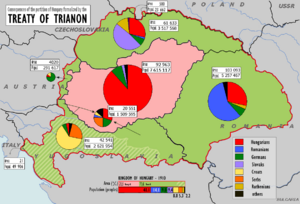
A big change happened between 1918 and 1920 with the Treaty of Trianon. This treaty greatly reduced the size of Hungary. As a result, about one-third of Hungarians became minorities in neighboring countries.
Today, more than two million ethnic Hungarians live in countries near Hungary. The largest groups are in Romania (in Transylvania), Slovakia, and Serbia (in Vojvodina). Smaller groups live in Ukraine, Croatia, and Austria.
In 2010, Hungary's Parliament passed a law allowing ethnic Hungarians living outside Hungary to get Hungarian citizenship.
Hungarian Roots
Modern Hungarians are unique because their language is different from most European languages. However, their genes are quite similar to the people around them. This is because the people of the Carpathian Basin have a common European gene pool. This pool formed from ancient hunter-gatherers, farmers from Anatolia, and steppe migrants.
Over time, different groups from the east, like the Huns, Avars, and the Hungarian conquerors, also settled in the Carpathian Basin. These groups mixed with the local people. The Hungarian conquerors, who founded the Hungarian state, had some Asian ancestry, but most of them had European genes.
The Hungarian language belongs to the Uralic language family. While the language has ancient roots in Siberia, modern Hungarians are genetically more similar to their European neighbors. However, they do have a small "Siberian" genetic part that came with the historical Magyars.
Other Influences
| Word roots in Hungarian | ||||
|---|---|---|---|---|
| Uncertain | 30% | |||
| Uralic | 21% | |||
| Slavic | 20% | |||
| Germanic | 11% | |||
| Turkic | 9.5% | |||
| Latin and Greek | 6% | |||
| Romance | 2.5% | |||
| Other known | 1% | |||
Besides the groups mentioned, Hungarians were also influenced by other people in the Carpathian Basin. These include the Cumans, Pechenegs, Jazones, West Slavs, Germans, and Vlachs (Romanians).
The Ottomans ruled central Hungary for about 150 years. Their presence also left an influence. After the Ottomans left, new settlers from other parts of Europe, like Germans, Slovaks, and Serbs, moved into the empty areas. Groups like Armenians, Roma, and Jews have also lived in Hungary for a long time.
Hungarians Around the World
The Hungarian diaspora refers to all ethnic Hungarians who live outside of present-day Hungary. Many Hungarians moved to other countries for various reasons throughout history.
- Maps of the Hungarian diaspora
-
Hungarians in the United States (according to the 2018 census)
Maps
-
Kniezsa's (1938) view on the ethnic map of the Kingdom of Hungary in the 11th century, based on place names.
-
Ethnic map of the Kingdom of Hungary in 1495 by the Hungarian Academy of Sciences (Hungarians are shown in orange)
Hungarian Culture
Hungarian culture has unique features. It combines local European traditions with some influences from Central Asia and the steppes. These influences include Horse culture and old beliefs from shamanism.
Traditional Costumes
Folklore and Communities
-
Hungarians dressed in folk costumes in Southern Transdanubia, Hungary
-
Kalotaszeg folk costume in Transylvania, Romania
-
Csárdás folk dance in Skorenovac (Székelykeve), Vojvodina, Serbia
See also
 In Spanish: Pueblo magiar para niños
In Spanish: Pueblo magiar para niños
- Central Europe
- Demographics of Hungary
- List of Hungarians
- List of people of Hungarian origin
- Ugric languages
- Khanty people
- Mansi people
- Eastern Magyars
- Magyarab people
- Jász people
- Székelys of Bukovina
- Kunság
- Pole, Hungarian, two good friends
- Hungarian mythology
- Hunor and Magor
- Shamanistic remnants in Hungarian folklore
- List of domesticated animals from Hungary
- Hungarian Americans
- Hungarian cuisine
- Hungarian culture
- Romani people in Hungary


